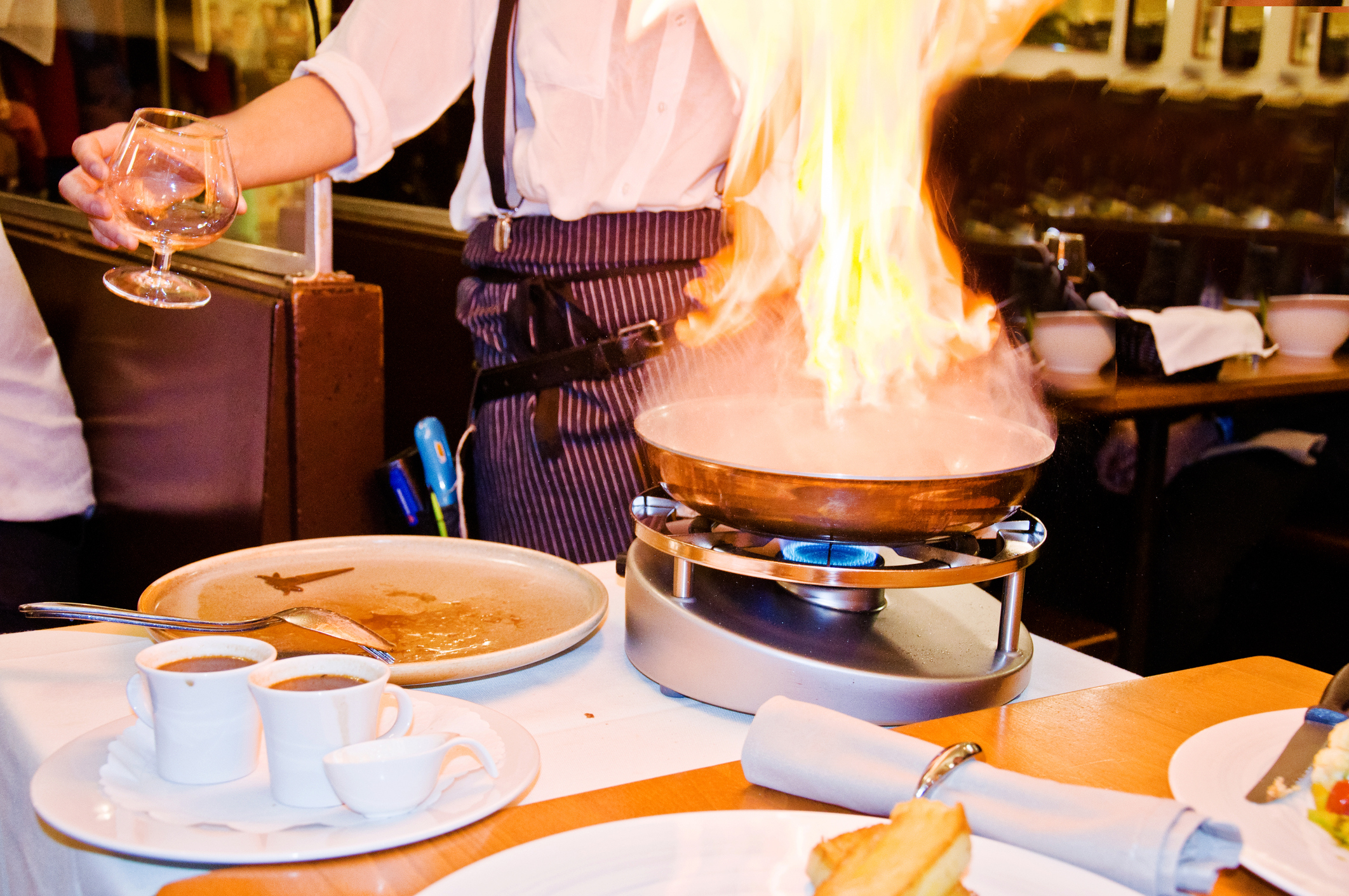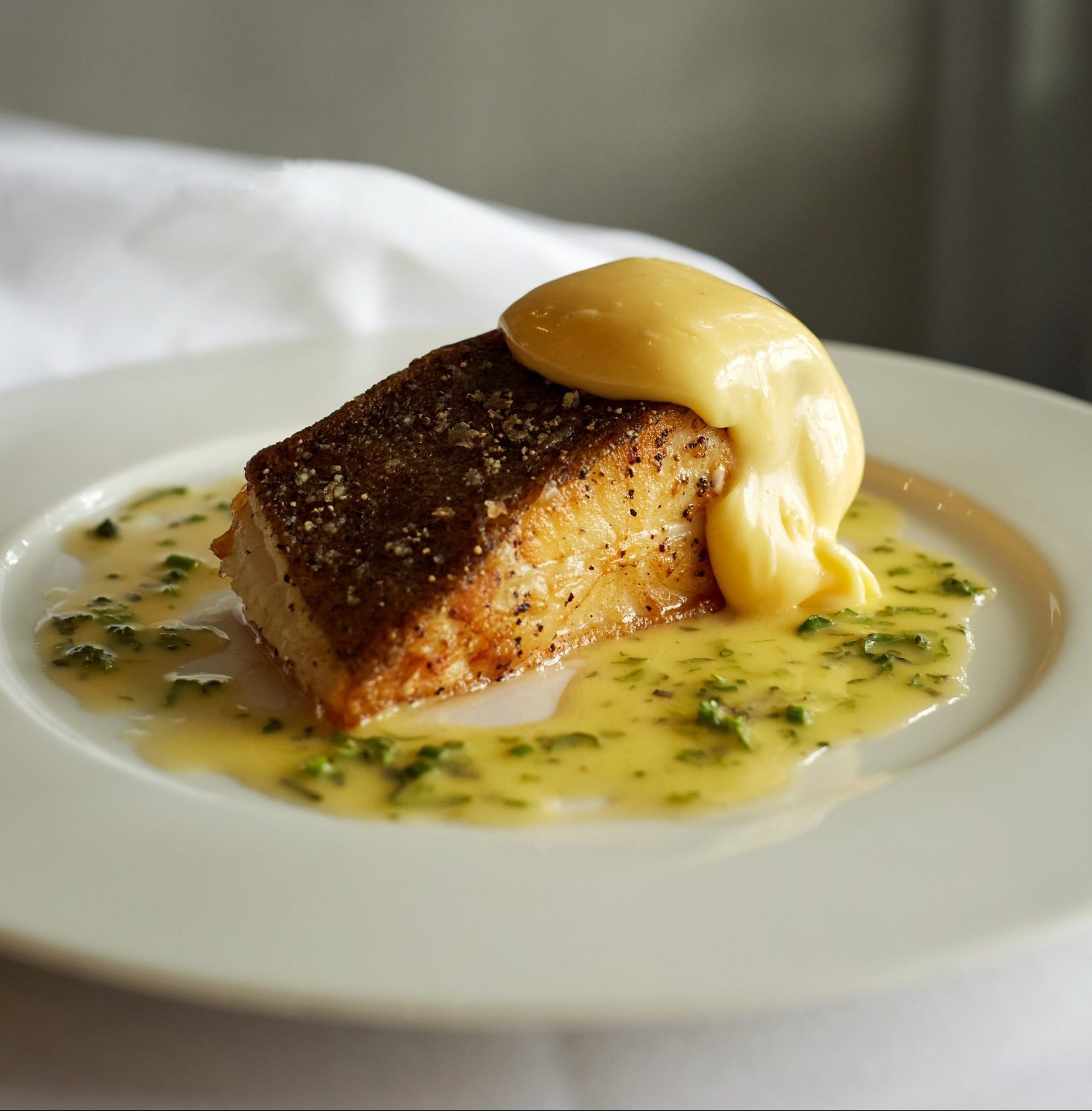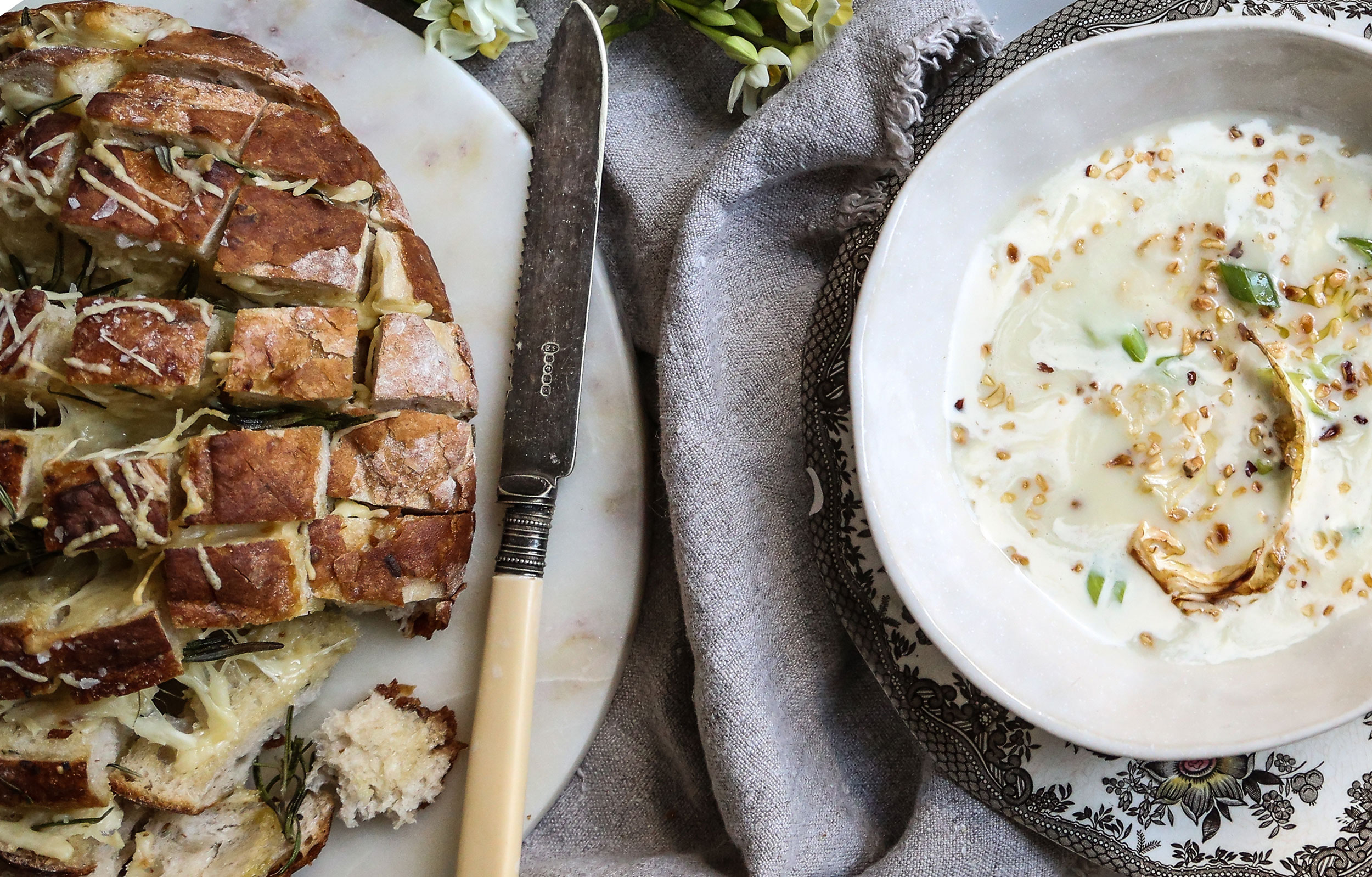Tableside cooking: Dinner with a side of drama
Tableside cooking is nothing new, but modern-day diners have forgotten how fun it can be, says Tom Parker Bowles, who makes his case for its renaissance.


The contraption looks innocent enough, all gleaming silver dome and delicately wrought legs, decorated with pretty Rococo swirls. A vast screw protrudes from the top, its handle shaped like a ship’s wheel, giving the impression of a particularly ornate nutcracker. Or a juicer, designed for Marie Antoinette. But rather than plump walnuts or luscious oranges, this machine craves only one thing: bones — and lots of them.
For this is a tool more suited to a medieval torture chamber than a lady’s boudoir — an antique duck press, hand-cranked to crush sinew, bone and cartilage alike, squeezing out every last drop of fat, juice and blood. And it’s sitting beside my table at Otto’s, on Gray’s Inn Road in London WC1, where the eponymous Otto Tepasse, whippet thin and elegantly attired, is working his tableside magic. First the duck — sourced from a specialist farmer in Challans, France — is roasted, then it is returned to the table for inspection, crisp skinned, golden and glorious. The breasts are removed with surgical precision, sliced into thin pink slices and set aside. Now the real drama begins.
The carcass is crammed into the machine’s chamber and the wheel is slowly turned, until those precious juices, dark and delicious, flow down the small spout into a jug below. Next, a small spirit burner is lit and the essence of quacker poured into a pan, mixed with wine and Cognac, briefly flamed. A little cooked liver is added, too, before a deft swirl, a brief bubbling reduction and the finished sauce, shiny and intense, is carefully spooned across the breast. Tableside cooking with all the drama of King Lear, albeit a rather happier ending (for diner, not duck).
Not only a joyous culinary Cavalcade, edible Oklahoma!, but one of London’s great dishes, an irresistible combination of showmanship and succour. ‘When I opened Otto’s,’ Mr Tepasse tells me, ‘they said it wouldn’t work. People had no knowledge of table service, as it had gone out of fashion.’ How wrong they were. Open for a little over a decade, it’s now a London classic. And I’m not alone in my adoration. ‘I could do 100 ducks a week,’ he admits. ‘But I limit the number, as this is all about the dining experience. I want things done properly.’ He prepares pigeon d’Anjou in the same way. As well as lobster, with its own separate press. Steak tartare is mixed to taste at the table and crêpes Suzette, too, set alight with well-honed aplomb.
Doing things properly is what Otto’s is all about. In the 1960s and 1970s, most dishes at the grand hotels and restaurants of Paris and London were finished at the table. Such as flambéed veal, kidneys and Framboise Romanov at Maxim’s in Paris, where Mr Tepasse trained. ‘The maître’d had been on Le France, one of the great liners. He had so much class, so much knowledge that simply doesn’t exist anymore.’
The chef-cum-showman learned about canard à la presse at La Tour D’Argent (the 400-year-old Parisian institution), where each pressed duck is given a number and the diner a certificate of having eaten it. This wasn’t mere theatre, rather an art in its own right. Arriving in London in the late 1970s, Mr Tepasse worked at Mirabelle, where ‘every single dish, 20 to 30 of them, was prepared or reheated at the table’. Of course, tableside theatre is nothing new. Showmanship and cooking have been the closest of allies since man first cooked over fire and worked out that he who grills the mammoth may rule the roost.
In the Middle Ages, the Royal Steward would have carved the baron of beef, hogshead or roast swan with all the pomp and ceremony that befitted his position, presenting the choicest cuts to his king or lord. The carving of the Sunday roast is a British ritual, but it was Escoffier, centuries later, who created the whole modern-kitchen system, batterie de cuisine. For favoured guests, Edward VII, say, the great man would emerge from the kitchen to finish off the dish with a flourish.
Exquisite houses, the beauty of Nature, and how to get the most from your life, straight to your inbox.
‘I trained in the 1970s,’ recalls John Williams, executive chef of The Ritz, ‘and everything was silver served. It wasn’t until the 1980s, when chefs took control to ensure that food left the kitchen and went directly to the guest, that it was served how the chefs wanted it.’
As dining grew more democratic and tastes less baroque, so the allure of tableside cooking began to fade. Nouvelle cuisine, with its emphasis on purity, simplicity and lighter sauces, began to dominate haute cuisine (and change it, largely for the better). Plates grew smaller and egos larger, so plating became the provenance of chefs, not waiters. Finishing dishes at the table became not only impractical and expensive, but outdated and outmoded. A relic of the past, rather than a taste of the future.
Falling out of fashion, essential skills were neglected and shortcuts taken, with dishes left to wither on the chafing dish or burn in an excess of booze. You couldn’t turn up and wing it. This was a job that required some skill. ‘Training is absolutely vital,’ says Mr Williams, ‘especially for something such as a whole duck, one of the most difficult cuts to serve in the room. For table service to work, people need a very clear understanding. They have to know how to cook.’ He has a special ‘Arts de la Table’ menu at The Ritz (www.theritzlondon.com). Even a dish such as crêpes Suzette requires cooking skills ‘in understanding how far to take the caramel and at which point to flambée to ensure the perfect consistency’.
Mr Williams notes that it’s also about the perception of a waiter’s job, as a highly trained, respected and skilled professional, rather than a part-timer using the job as a stop-gap. ‘It is very important the waiters have these skills, otherwise they are mere plate carriers.’
Admittedly, the ‘arts des tables’ is not for everyone. Both men admit it’s quite laborious and requires a lot of equipment — equipment many restaurants don’t have the space, or budget, to adopt. But for aficionados (and there are many), it’s a dining delight, pure culinary foreplay, a lascivious wink and throaty sigh, with the promise of much more to come.
‘It’s all about that interaction with the customers, as well as the finished dish,’ argues Mr Tepasse. Whose senses can fail to be stirred by that blast of warm, truffle-scented air, as your poularde de Bresse en vessie (chicken cooked in a pig’s bladder) is sliced open, mere inches from your eyes (and mouth); or moved by the sight of lobster spaghetti, fresh picked and flambéed at the table, as it is at 45 Jermyn Street, SW1 (www.45jermynst.com). Harry’s Bar, W1, has brought back steak Diane, also flambéed at the table (www.harrysbar.co.uk), and Maison François, SW1, has one of the greatest pudding trolleys in existence, where form meets fabulous function (www.maisonfrancois.london). At Wiltons, SW1, Dover sole is always filleted before your eyes. Old school, but new cool (www.wiltons.co.uk).
‘It creates theatre, atmosphere and ambience,’ says Mr Williams. ‘When a waiter cooks crêpes Suzette or canard à la presse, it’s there for all to see.’ And as to the future? ‘In a few years’ time,’ says Mr Tepasse with a smile, ‘just you wait. Tableside cooking will be the height of fashion once more.’ He pauses. ‘But it must be done properly. It’s not about dumping things on a plate, it is a beautiful art and craft in its own right.’ With that, he goes back to his silver press. The punters are eagerly expectant. And the show must, as ever, go on.

How to make Rick Stein’s turbot with hollandaise — and why you should never make it with a perfectly fresh fish
A versatile Old Master, turbot is a flat fish so eternally appealing that it commands its own cooking vessel, says

When did Stir-up Sunday first begin?
On the last weekend before Advent, families gather to make Christmas pudding on the day we know as Stir-up Sunday.

How to make three-cheese sourdough bread and a perfect winter-warmer soup to go with it
We'll leave it up to you to decide whether the soup or the sourdough is the star of the show
Tom Parker Bowles is food writer, critic and regular contributor to Country Life.
